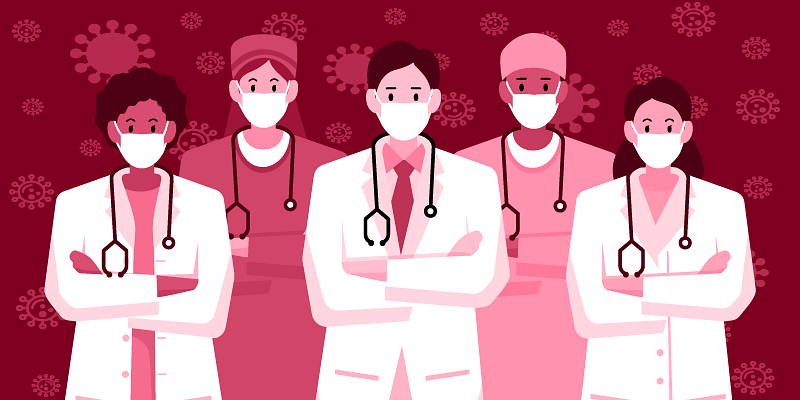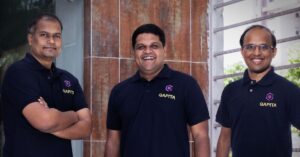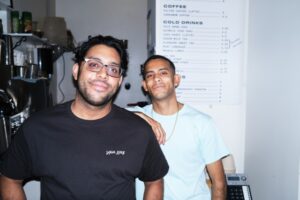As India battles a brutal second wave of the COVID-19 pandemic, several startups across the country have stepped up to provide innovative tech-led solutions to assist the healthcare system.
One of these startups is Bengaluru-based . Led by Meena Ganesh and Vaibhav Tewari, the consumer healthcare startup began providing remote monitoring, home isolation, and teleconsultation services to help patients access medical care amid the first wave last year.
In the last few weeks, India has been hit by a deadly second wave of the virus, which has led to an acute shortage of resources and medical professionals. Portea has once again stepped up to deliver oxygen cylinders and concentrators to patients across the country, home ICU setups, nursing services, and more.
However, as most hospitals are now focusing more on COVID-19, the startup is also seeing an increase in demand for medical assistance for non-COVID-19 cases, including home healthcare and disease management, therapies, and other related services.
“We have been aggressively working towards training more people and increasing our resources to offer healthcare support to more patients across various cities,” Vaibhav Tewari, Co-founder and COO, Portea Medical, tells YS.
The startup is now planning to launch vaccination drives at several corporate campuses in the next few weeks as vaccine availability becomes easier.
In a conversation with YS, Vaibhav outlines how Portea Medical has been aiding patients across the country since the outbreak of the pandemic last year.
Vaibhav Tewari, Co-founder, Portea Medical
Edited excerpts:
YS (YS): How are you and your team working to leverage tech and your platform in India’s fight against the deadly second wave?
Vaibhav Tewari (VT): Portea Medical has deployed the best available technologies in the war against COVID-19. When the pandemic hit India last year, we had taken several steps to provide remote monitoring, home isolation and teleconsultation services to patients in various parts of the country.
We collaborated with various state governments to deliver these services on a public-private partnership model alongside developing a technology-driven chatbot to disseminate authentic information about the pandemic.
Now, during the second wave, we are leveraging our experience of the last one year to help more people. We are constantly expanding our technology and human resources to continue delivering telemedicine, teleconsultation, remote monitoring and home healthcare services to as many people as possible.
We are also battling the prevalent oxygen shortage from the frontlines, deploying thousands of oxygen cylinders and concentrators across India.
Recently, we entered into a collaboration with Hindustan Unilever Limited wherein they are going to provide us with 4,000 oxygen concentrators that will be supplied to patients free of charge. We are constantly on the move to optimise healthcare delivery to patients across India and saving as many lives as possible.
YS: What is the impact you believe you’ve been able to create so far since the first wave and particularly, during the second wave?
VT: From the time that the first wave hit India, we have provided care to over 4,00,000 patients across India. This includes home isolation services to more than 3,00,000 patients in different states of the country.
Portea has also delivered over 2.5 lakh doctor consultations and more than 1.2 million follow up calls to the COVID-19 patients in isolation and only less than 3 percent of them needed hospitalisation.
During the current second wave, we have been better prepared due to our extensive experience of dealing with pandemic challenges. So far, we have delivered services such as oxygen management, home ICU, nursing, and more to over 3,000 patients in less than a month. We are also seeing over 3X more calls now into our call center compared to pre-COVID-19 times.
We have tens of thousands of oxygen concentrators deployed all over India and are working on supporting patients with enhanced capacity.
Image Credits: Shutterstock
YS: Tells us about the kind of demand you are seeing and the number of users using your services amid the second wave.
VT: Compared to the first wave of the pandemic, the second wave is a lot more contagious and has impacted a lot more people than the last one. The increase in the number of mild-to-moderate infections has been really high.
This is the segment of patients that doesn’t require hospitalisation and this is where Portea Medical has been highly instrumental in supporting such patients. We have been managing the patients through remote monitoring, telemedicine consultations and support through home healthcare.
Moreover, with a large number of hospitals designated as COVID-19 specific, we are witnessing a lot of demand from non-COVID patients for home healthcare and disease management, therapies, and various other related services.
Portea’s remote monitoring services are available to individual consumers as well as corporate through teleconsultations as well as video.
The demand is exceptionally high and it often exceeds the resources in place. We have been aggressively working towards training more people and increasing our resources to offer healthcare support to more patients across various cities.
YS: What are the trends you’re seeing play out in your space amidst the COVID-19 second wave?
VT: Unlike the last time, the second wave has seen greater instances of several family members or the entire families getting infected and the number of asymptomatic cases has been much higher. Thus, we are witnessing a lot of people unassumingly becoming the virus’s carriers, and that explains the much sharper spike in infections.
Secondly, while the elderly and those with co-morbidities are still at risk, the second wave is spreading faster among all age groups. A large number of deaths have occurred among the younger population as well.
The demand for oxygen support is way higher this time than the first wave. As a response, we are seeing a much stronger collaborative effort between corporate, NGOs and healthcare providers to overcome the situation.
Image source: Shutterstock
YS: Are you able to fulfil all this demand and/or what challenges are you facing in particular in doing so and for which products?
VT: The demand is exceptionally high in all areas. Despite having a large number of resources and personnel deployed across various cities, we often experience scenarios where demand outpaces availability.
We have tens of thousands of oxygen concentrators in use across the country, but the demand is always for more.
We are directly procuring more oxygen concentrators and other equipment from various countries and also training more people in areas related to basic healthcare support.
Our diagnostics demand has gone up by 50 percent, mostly driven by COVID-19 test needs. Most of our demand is from Delhi and Bengaluru. In fact, our partner labs are facing excessive demand so sometimes, test results can also get delayed. In April, demand was very high in north India, especially in Delhi and Lucknow.
YS: Did you launch any other unique COVID-related offerings amid the second wave?
VT: To augment the battle against the pandemic, we have introduced our oxygen support services where we have deployed large numbers of oxygen concentrators and cylinders to be used by the patients.
We are also working with leading corporates to provide free of cost oxygen concentrators to support pandemic patients and will continue to explore new ways to deliver quality healthcare to our users in the times to come.










